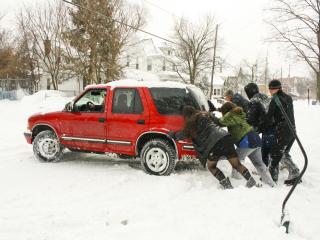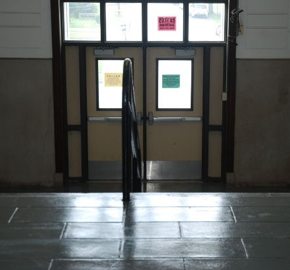 Change is hard. New Year’s resolutions almost always fail. But at The Energy Project, we have developed a way of making changes that has proved remarkably powerful and enduring, both in my own life and for the corporate clients to whom we teach it.
Change is hard. New Year’s resolutions almost always fail. But at The Energy Project, we have developed a way of making changes that has proved remarkably powerful and enduring, both in my own life and for the corporate clients to whom we teach it.
Our method is grounded in the recognition that human being are creatures of habit. Fully 95 percent of our behaviors are habitual, or occur in response to a strong external stimulus. Only 5 percent of our choices are consciously self-selected.
In 1911, the mathematician Alfred North Whitehead intuited what researchers would confirm nearly a century later. “It is a profoundly erroneous truism,” he wrote, “that we should cultivate the habit of thinking of what we are doing. The precise opposite is the case. Civilization advances by extending the number of important operations which we can perform without thinking about them.”
Most of us wildly overvalue our will and discipline. Ingenious research by Roy Baumeister and others has demonstrated that our self-control is a severely limited resource that gets progressively depleted by every act of conscious self-regulation.
CHECK Out: 4 Quick Tips to Find—and Keep—Happiness
In order to make change that lasts, we must rely less on our prefrontal cortex, and more on co-opting the primitive parts of our brain in which habits are formed.
Put simply, the more behaviors are ritualized and routinized — in the form of a deliberate practice — the less energy they require to launch, and the more they recur automatically
 What follows are our six key steps to making change that lasts:
What follows are our six key steps to making change that lasts:
1. Be Highly Precise and Specific. Imagine a typical New Year’s resolution to “exercise regularly.” It’s a prescription for failure. You have a vastly higher chance for success if you decide in advance the days and times, and precisely what you’re going to do on each of them.
Say instead that you commit to do a cardiovascular work out Monday, Wednesday and Friday at 6 a.m., for 30 minutes. If something beyond your control forces you to miss one of those days, you automatically default to doing that workout instead on Saturday at 9 a.m.
Researchers call those “implementation intentions” and they dramatically increase your odds of success.
2. Take on one new challenge at a time. Over the years, I’ve established a broad range of routines and practices, ranging from ones for weight training and running, to doing the most important thing first every morning without interruption for 90 minutes and then taking a break to spending 90 minutes talking with my wife about the previous week on Saturday mornings.
In each case, I gave the new practice I was launching my sole focus. Even then, in some cases, it’s taken several tries before I was able to stay at the behavior long enough for it to become essentially automatic.
Computers can run several programs simultaneously. Human beings operate best when we take on one thing at a time, sequentially.
 3. Not too much, not too little. The most obvious mistake we make when we try to change something in our lives is that we bite off more than it turns out we can chew. Imagine that after doing no exercise at all for the past year, for example, you get inspired and launch a regimen of jogging for 30 minutes, five days a week. Chances are high that you’ll find exercising that much so painful you’ll quit after a few sessions.
3. Not too much, not too little. The most obvious mistake we make when we try to change something in our lives is that we bite off more than it turns out we can chew. Imagine that after doing no exercise at all for the past year, for example, you get inspired and launch a regimen of jogging for 30 minutes, five days a week. Chances are high that you’ll find exercising that much so painful you’ll quit after a few sessions.
It’s also easy to go to the other extreme, and take on too little. So you launch a 10-minute walk at lunchtime three days a week and stay at it. The problem is that you don’t feel any better for it after several weeks, and your motivation fades.
The only way to truly grow is to challenge your current comfort zone. The trick is finding a middle ground — pushing yourself hard enough that you get some real gain, but not too much that you find yourself unwilling to stay at it.
4. What we resist persists. Think about sitting in front of a plate of fragrant chocolate chip cookies over an extended period of time. Diets fail the vast majority of time because they’re typically built around regularly resisting food we enjoy eating. Eventually, we run up against our limited reservoir of self control.
The same is true of trying to ignore the Pavlovian ping of incoming emails while you’re working on an important project that deserves your full attention.
The only reasonable answer is to avoid the temptation. With email, the more effective practice is turn it off entirely at designated times, and then answer it in chunks at others. For dieters, it’s to keep food you don’t want to eat out of sight, and focus your diet instead on what you are going to eat, at which times, and in what portion sizes. The less you have to think about what to do, the more successful you’re likely to be.
 5. Competing Commitments. We all derive a sense of comfort and safety from doing what we’ve always done, even if it isn’t ultimately serving us well. Researchers Robert Kegan and Lisa Lahey call this “immunity to change.” Even the most passionate commitment to change, they’ve shown, is invariably counterbalanced by an equally powerful but often unseen “competing” commitment not to change.
5. Competing Commitments. We all derive a sense of comfort and safety from doing what we’ve always done, even if it isn’t ultimately serving us well. Researchers Robert Kegan and Lisa Lahey call this “immunity to change.” Even the most passionate commitment to change, they’ve shown, is invariably counterbalanced by an equally powerful but often unseen “competing” commitment not to change.
Here’s a very simple way to surface your competing commitment. Think about a change you really want to make. Now ask yourself what you’re currently doing or not doing to undermine that primary commitment. If you are trying to get more focused on important priorities, for example, your competing commitment might be the desire to be highly responsive and available to those emailing you.
For any change effort you launch, it’s key to surface your competing commitment and then ask yourself “How can I design this practice so I get the desired benefits but also minimize the costs I fear it will prompt?”
6. Keep the faith. Change is hard. It is painful. And you will experience failure at times. The average person launches a change effort six separate times before it finally takes. But follow the steps above, and I can tell you from my own experience and that of thousands of clients that you will succeed, and probably without multiple failures.

Tony Schwartz is the president and CEO of The Energy Project and the author of The Way We’re Working Isn’t Working. Become a fan of The Energy Project on Facebook and connect with Tony at Twitter.com/TonySchwartz and Twitter.com/Energy_Project.



























 Good Samaritans were out in full force in Oklahoma, according
Good Samaritans were out in full force in Oklahoma, according 




